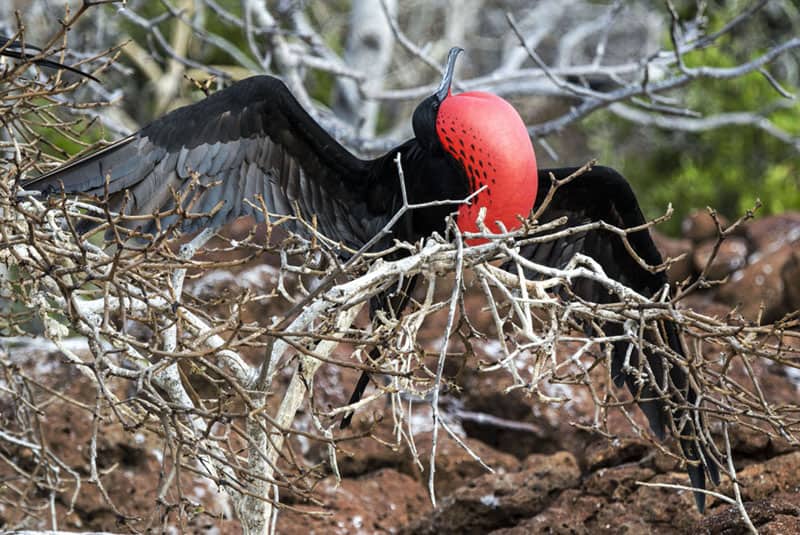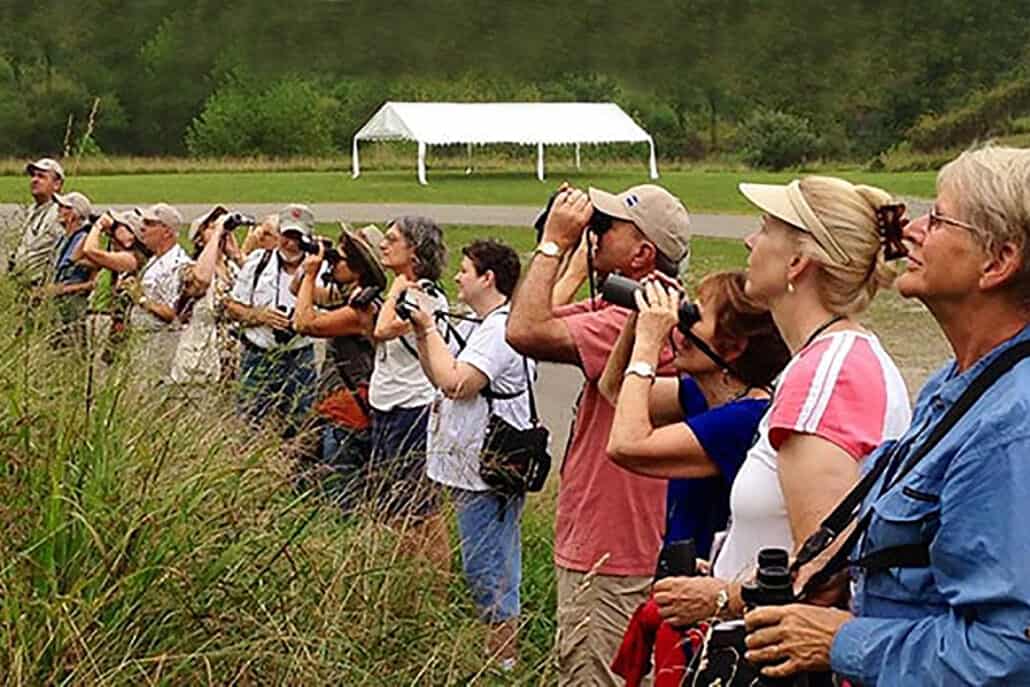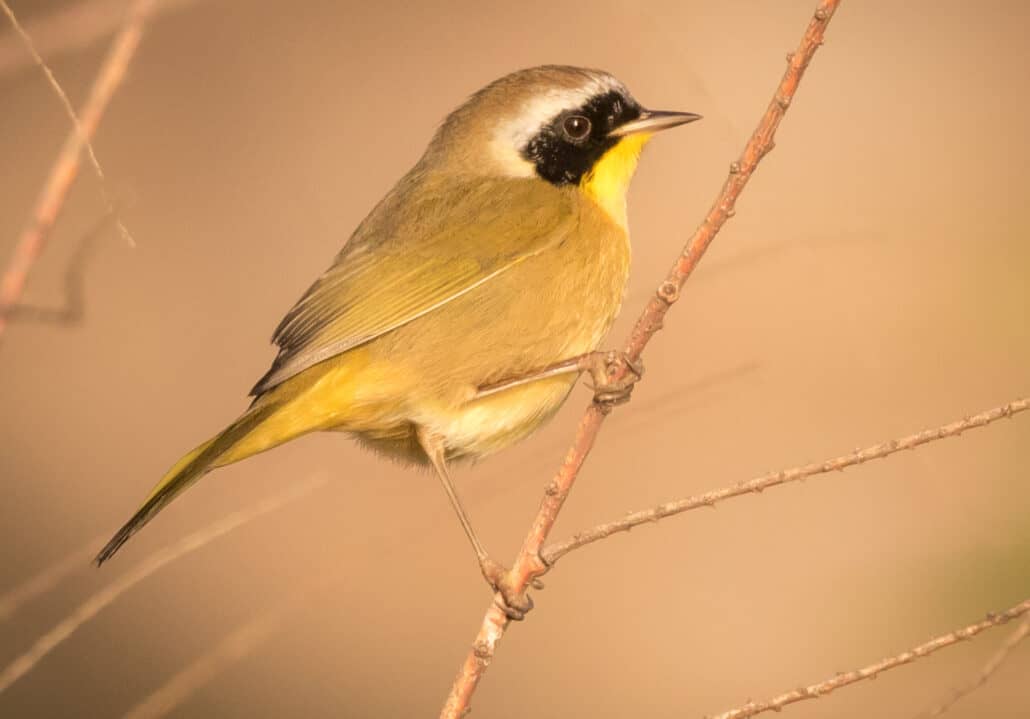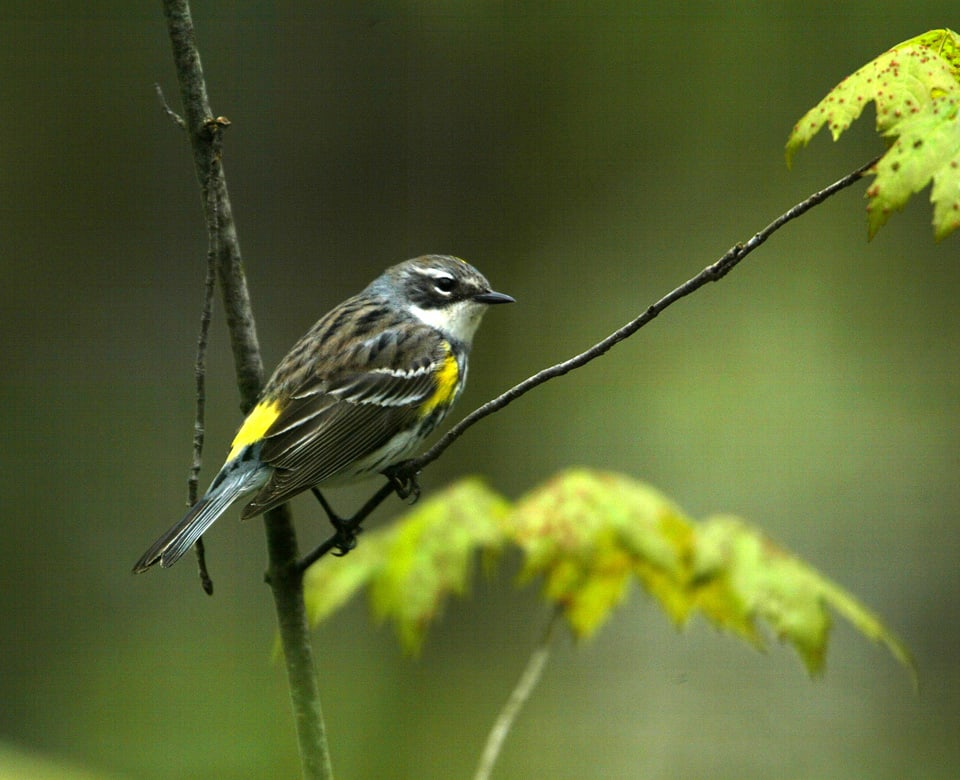Bird Watching in the Amazing Amazon Basin and Grand Galapagos Islands
My bucket list is full of places my husband, Mike, and I want to visit. We know we’ll never complete the list, because we are forever adding to it, but we are happy to have checked off the Arctic and Antarctic, and more recently the Amazon Rainforest and the Galapagos Islands.
I’ve visited Antarctica, my favorite place on Earth, twice. After visiting the Galapagos, I have to say that it rivals Antarctica in two ways. First, the animals are not afraid of humans—in fact, some seem to like the attention. Second, there are unique species found there and no place else on Earth.
Amazon Rainforest
We began our journey by flying to Quito, Ecuador, where we spent a couple of days exploring the old town and historic center of the highest capital city in the world. Though we saw rock pigeons, we couldn’t wait to head to the Amazon to see what we could find there.
On Halloween morning, we flew 35 minutes east to Coca, where our guide, Paul, met us for a two-hour ride on a long motor canoe on the Napo River, an Amazon River tributary. We ate lunch en route while gazing at various forms of river transportation and searching for wildlife. The river is low, so we zigged and zagged our way to a dock where native guides met us and transported our gear. We followed, walking 15 minutes through the jungle to the Garzacocha Lagoon, where we got in a paddle canoe for the 15-minute ride to paradise, La Selva Jungle Lodge, in the Amazon Rainforest.
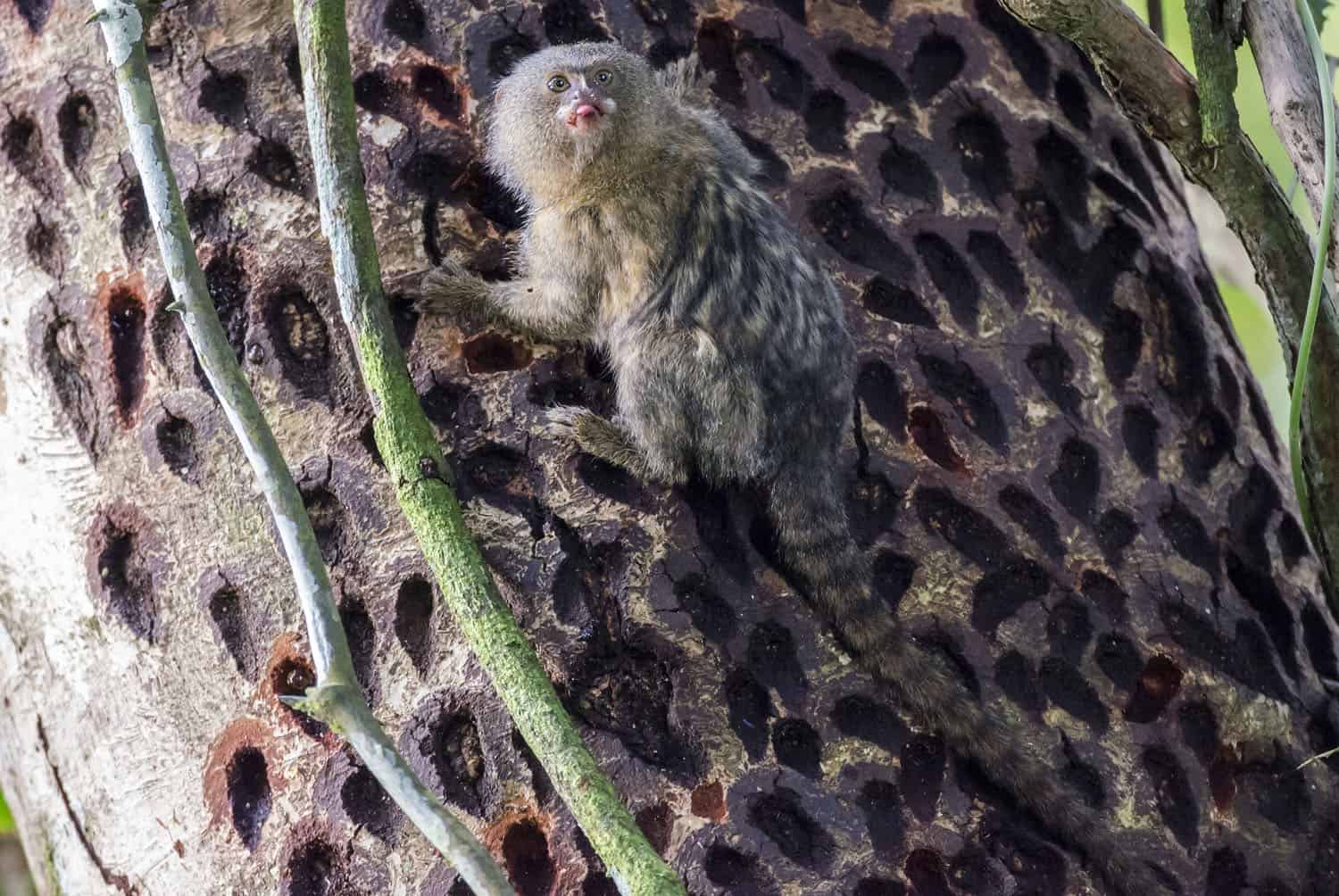
We were amazed by the lodge, a place birding author Ned Wheatley called “simply one of the world’s best birding sites.” Our room overlooked the lagoon, where we often saw hoatzins, noisy pheasant-sized birds that groan, hiss, and grunt. We also heard howler monkeys and noted each time that they really do sound like the wind howling.
We spent five days at La Selva, venturing out twice a day with our bilingual guide, Paul, and our native guide, Medardo. Late afternoon canoe rides enabled us to see monkeys, hoatzins, pygmy kingfishers, tiger herons and one of the best sightings, though too far away to photograph, an ornate hawk eagle. During jungle walks we encountered poison dart frogs, big blue morpho butterflies, and pygmy marmosets. We climbed up the 120-foot-tall observation tower, which gave us a view of paradise tanagers, all kinds of parrots, toucans and more.
Howler monkeys bid us a safe journey back to Quito as we left the jungle for the night.
Going to the Galapagos
The following morning, we flew from Quito west to Baltra, on the Galapagos Islands, where we joined 12 other passengers at the airport. Our bilingual guide, Salvador, accompanied us to the port where we boarded the M.S. Samba for our 15-day adventure.
The Samba offers two different itineraries, an eight-day trip to the larger northwestern islands, and another eight-day trip to the southeastern islands. Although visitors can choose to do one or the other, we chose both trips because we couldn’t make up our minds, and both sounded equally great.

Galapagos National Park was established in 1959 and is a mecca for those who wish to see unique animal and plant life. According to the Galapagos Conservancy, the Galapagos Islands offer some of the highest levels of endemism on the planet. Imagine a place where 80 percent of the land birds, 97 percent of the reptiles and land mammals, 30 percent of the plants and more than 20 percent of the marine species occur nowhere else on Earth. Birders should note that there are more than two dozen endemic bird species, including 13 species of finches, the rare lava gull, the adorable Galapagos penguin, the regal Galapagos hawk, the comical Nazca booby, the wimpy-winged flightless cormorant and the stunningly beautiful waved albatross.
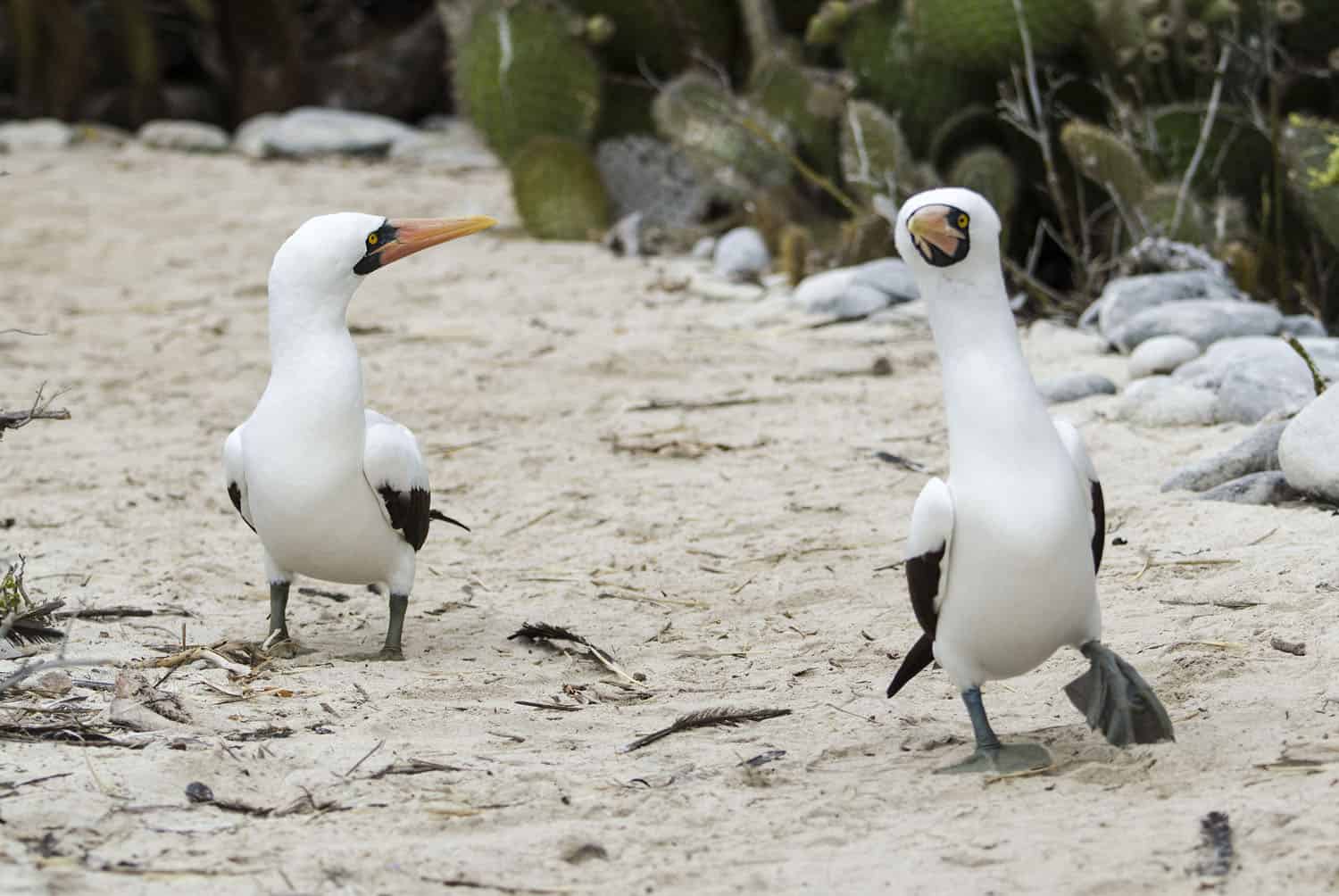
Northwestern Islands
On our first trip, we explored the northwestern islands, the newest islands in the chain. We visited seven—Baltra, Genovesa, Marchena, Isabela, Fernandina, Floreana, Santa Cruz—each quite different from the others. For instance, the iguanas, lizards and tortoises on one island may differ from the iguanas, lizards and tortoises on another island.
After motoring eight hours to Genovesa Island, crossing the equator en route, we spent time on land watching Nazca boobies waddle down the trail, a swallow-tailed gull feeding squid to its chick, and red-footed boobies sitting in trees. A red-billed tropicbird chick lay waiting for its parents to return with food. Sea lions thrilled us, and short-eared owls stood for portraits.
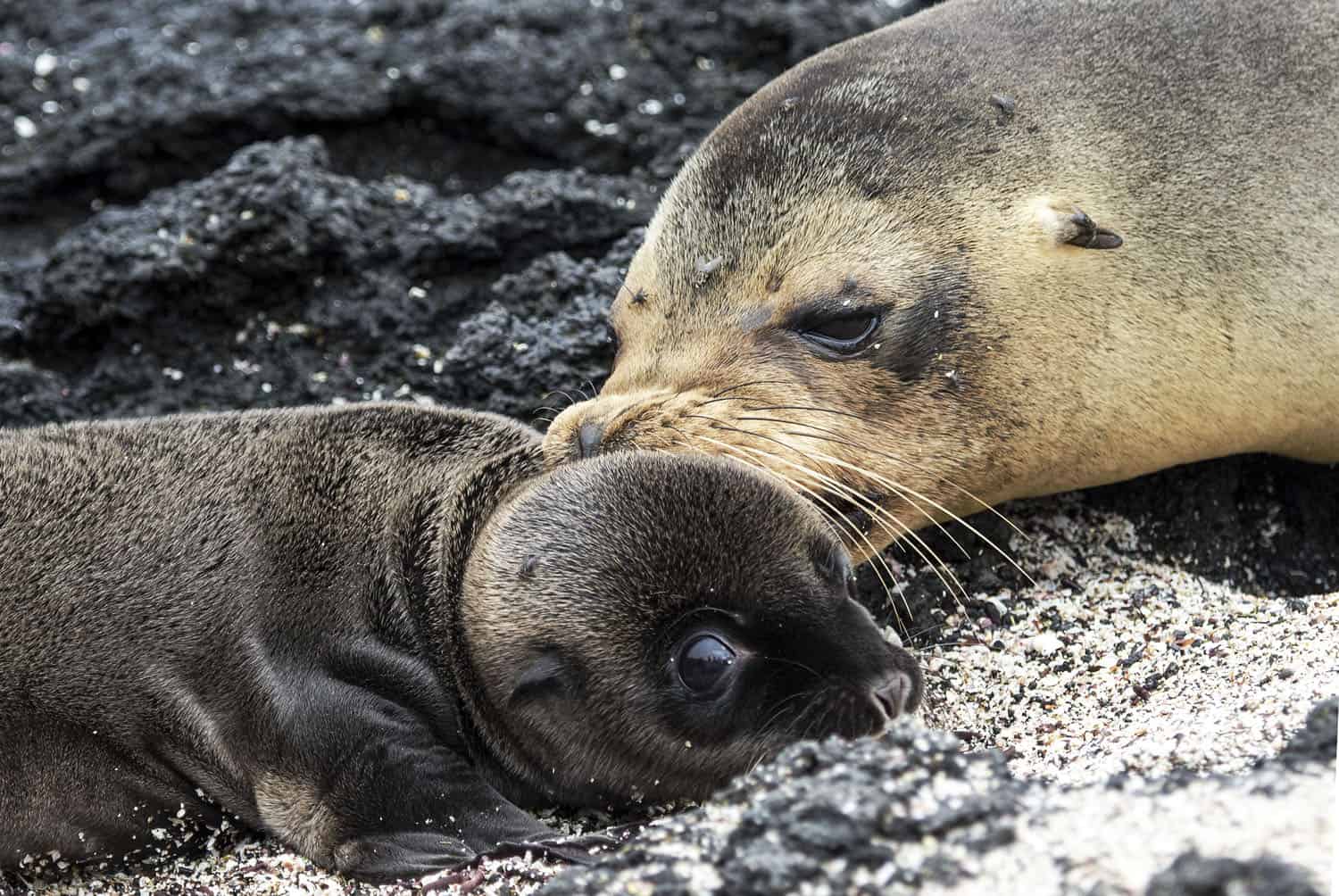
Next we motored west to Marchena Island, where we snorkeled with Galapagos fur seals. Snorkeling was always a chilly adventure because there are many cold currents in the Galapagos, but the always-delightful crew provided us with wetsuits and even helped us suit up! There’s no doubt, it was worth freezing to see so many wonderful kinds of marine creatures.
Look on a map and you’ll see that Isabela, the largest Galapagos Island, is shaped like a seahorse. It’s unmistakable. We landed on the northern tip at Punta Albemarle and saw piles of marine iguanas, two sea lion pups, including a one-day old baby, and a Galapagos hawk. Later we traveled to Punta Vicente Roca, where we snorkeled with as many as 30 green sea turtles, a manta ray, sea lions, Galapagos penguins and all kinds of fish.
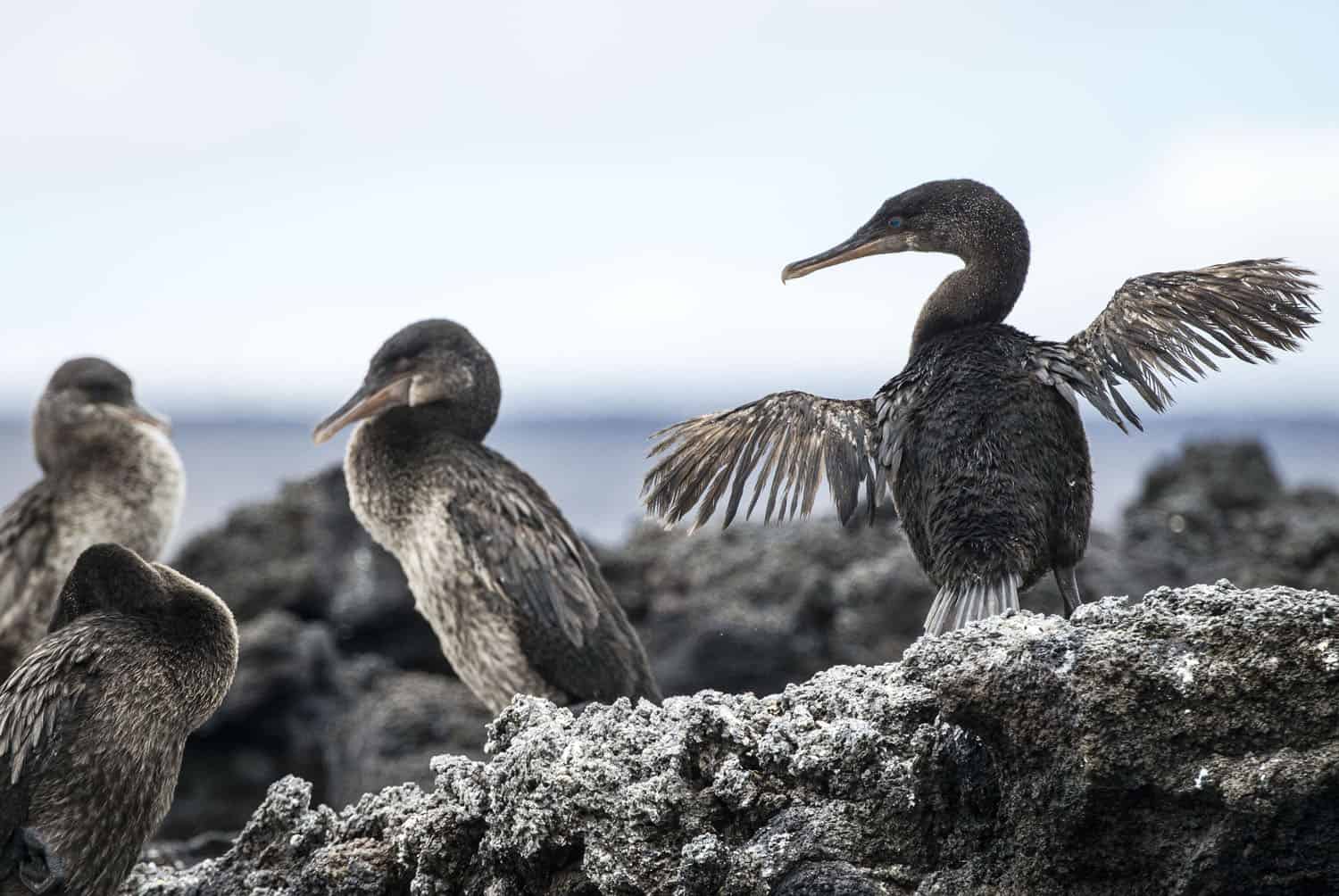
Marine iguanas and sea lions greeted us at Punta Espinosa on Fernandina Island. But the highlight of our landing was spending time with flightless cormorants, who squabbled and pecked each other. Watching them, we were satisfied with our decision to go on both tours, because we wouldn’t see flightless cormorants on the southeastern islands. There, we would see waved albatross, magnificent creatures that are not common on the northwestern islands.
That afternoon we snorkeled with marine iguanas feeding on algae and smiled as a penguin zoomed by. Although we saw penguins south of the equator, these are the only one of seventeen penguin species that venture into the northern hemisphere.
On another day, a dinghy ride around the mangroves at Elizabeth Bay had us in awe of the big, tree-like mangroves. After lunch we hiked across stark lava, with views of several volcanoes, to the brackish lagoons at Punta Morena, where we watched American flamingos.
One morning, we went ashore at Puerto Velasco, on Floreana Island, and took an open-air bus ride up into the highlands. We started out in a dry desert and ended up in a lush forest, where we walked among many giant tortoises before hiking to the top of Cerro Alieri, elevation 1,115 feet.
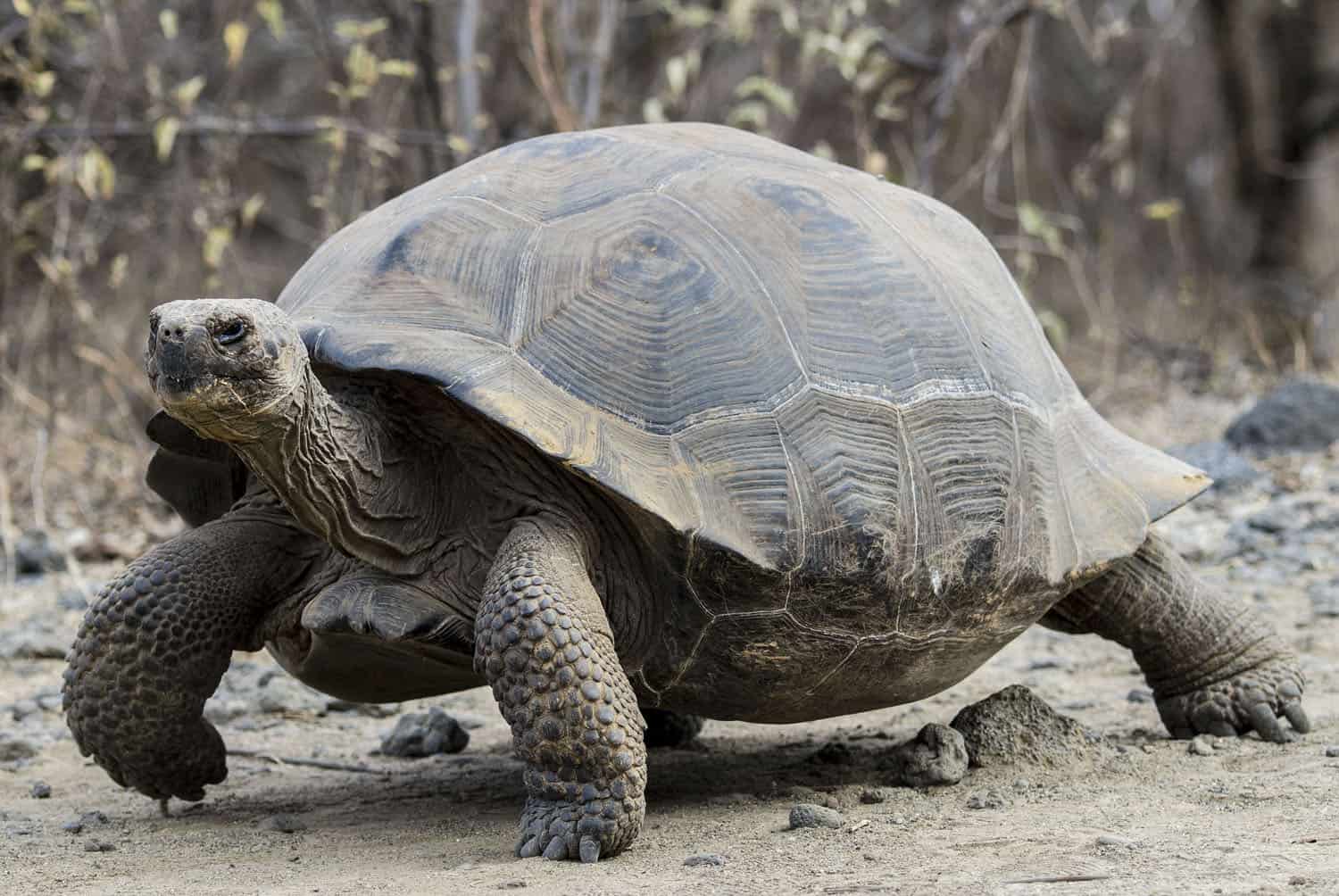
On day eight, we visited the Charles Darwin Center on Santa Cruz Island as a group, then the folks who would be leaving headed to the airport along with Salvador, our guide. We were one of four couples who opted for both tours, so we all roamed around the quaint town of Puerto Ayora. For several hours we watched sea lions and brown pelicans beg at the local fish market; we walked around town, and we enjoyed the local bird life. In the afternoon, we journeyed to the Mariposa Ranch up in the highlands of Santa Cruz Island, where we met three other couples and our guide, Martha. After lunch, we toured the El Chato Reserve, where we saw and photographed many giant tortoises. The behemoths travel up and down the mountain twice a year to find food and to breed.
Southeastern Galapagos Islands
On the second leg of our trip, we explored 10 islands: Santa Cruz, Floreana, Española, San Cristóbal, Santa Fe, Plaza Sur, Santiago, Rabida, North Seymour Island and Baltra.

On our first full day with the second group, we explored more of Floreana Island. Landing at Punta Cormorant, we hiked to a beach where there are yellow warblers walking on white sand and stingrays in the shallow surf. Next we snorkeled at Champion Rock, a wonderful place with lots of fish. In the afternoon, we visited Post Office Bay, a place where tradition prompts visitors to look through the postcards left by others and choose one from their region and then hand deliver it. We left a postcard and chose one to deliver.
We woke up early every day, but we don’t mind. We can sleep at home! We landed at beautiful Punta Suarez on Española Island and walked a rocky trail where sea lion pups play in the surf, lava lizards rest on rocks—and sometimes on lazy sea lions—while friendly Galapagos mockingbirds and Galapagos hawks stood for photos, and Nazca boobies courted. Waved albatrosses bobbed their heads, performing wild courtship dances for all to see, while some large chicks rested on the ground.
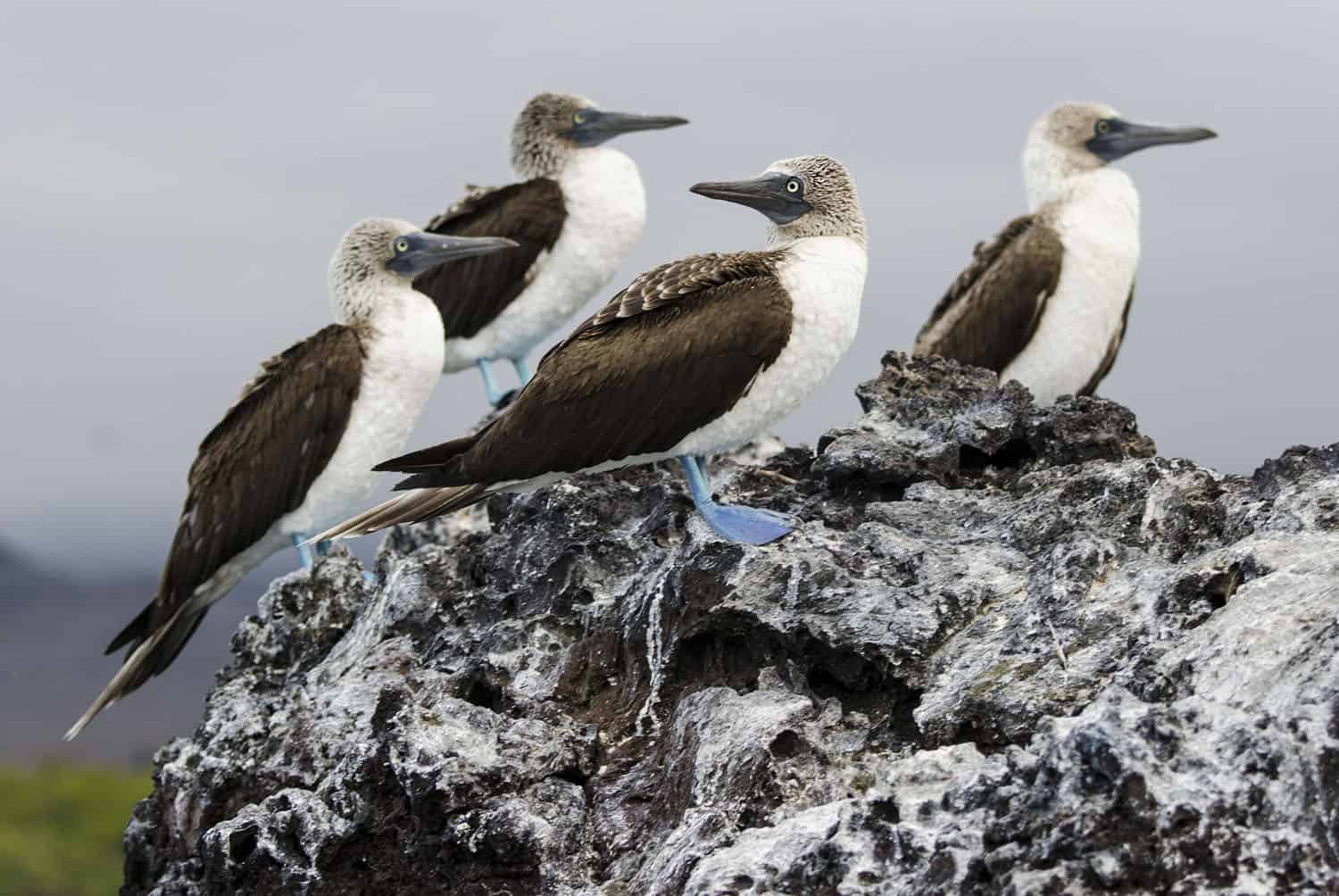
At Lobos Islet, we woke up to clouds, but soon we had sunshine and wonderful light for photographing blue-footed boobies. Some of us stood horrified when a booby brought food for its youngster and was immediately attacked by a gang of magnificent frigatebirds who ultimately stole the fish. We also saw marine iguanas and lava lizards endemic to the island of San Cristobal Island. Later, we snorkeled at Kicker Rock, doing a deep ocean swim that most agree was one of our best snorkels yet, with close-up views of eagle rays, green sea turtles, Galapagos sharks, and more.
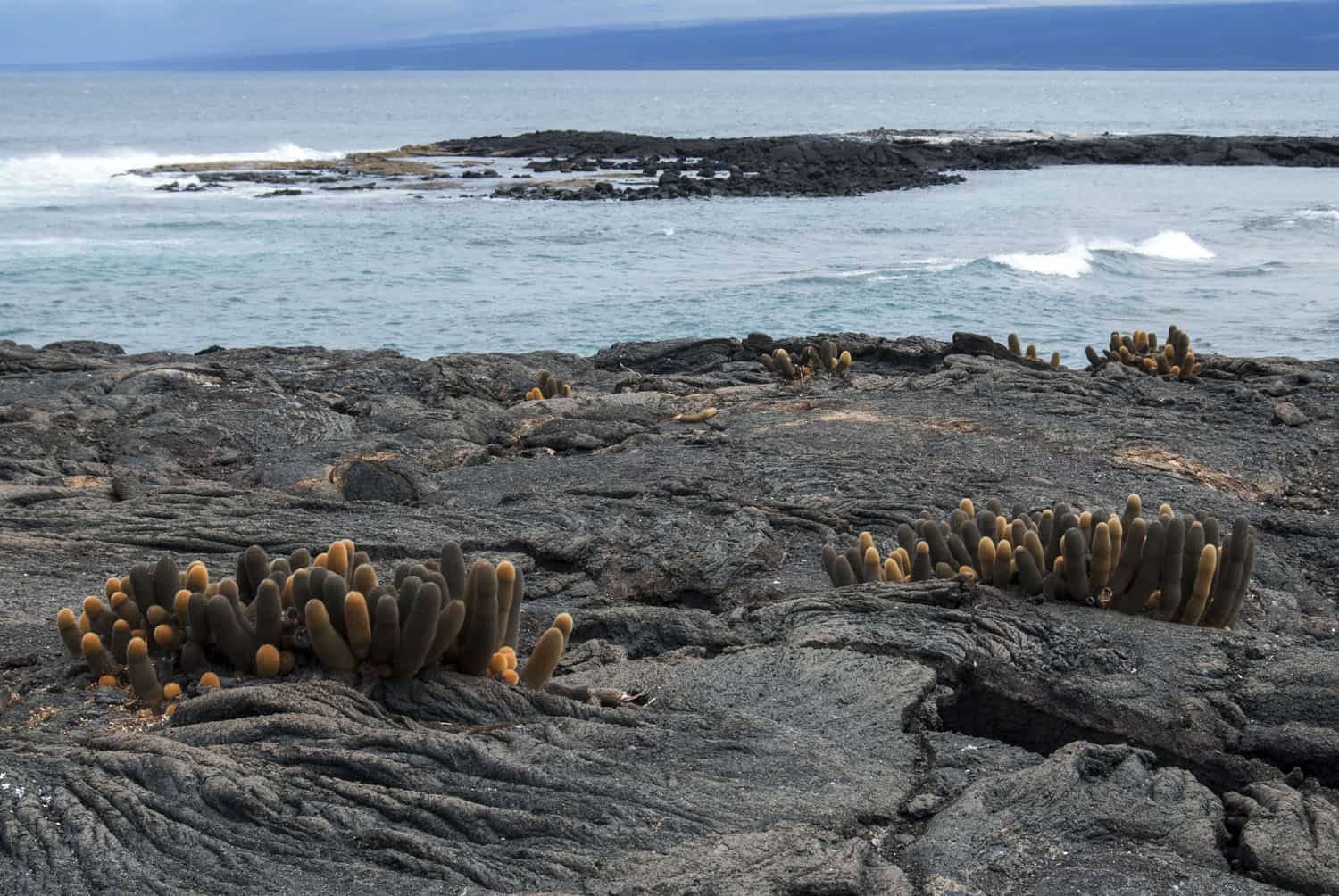
From Barrington Bay on Santa Fe Island, we went on shore and found the usual sea lions welcoming us, along with Galapagos hawks. We are still amazed at how close we could get to the wildlife. The endemic species thrilled us, including the pale yellow Santa Fe land iguana, found nowhere else in the islands. We also saw some enormous prickly pear cacti that seemed more like trees. At Plaza Sur and Punta Carrion, we admired the red hues of the island in contrast with the blue water and stately cactus. We giggled at the land iguanas fighting over cacti, and stand amazed as brisk winds and magnificent red-billed tropicbirds join together.

Although most of our days were wildlife-filled, one day we focused on the geology of the Galapagos, and enjoyed a pleasant walk on the lava at Santiago Island. Later we climbed a cinder cone via a wooden trail on Bartolome Island. Even though the wind raged on the peak, everyone enjoys the wonderful views. But the highlight of our day was a wildlife moment when we swam with a Galapagos penguin.
A highlight of our trip—and there were many—was at James Bay on Santiago Island. We arrived at low tide and thrilled to watch sea lions chasing one another, a yellow-crowned night heron standing quiet, a fur seal mom and her pup squawking, and a lava heron hunting in a tide pool. We savored our last snorkel, swimming with green sea turtles and, as always, lots of colorful fish of all shapes and sizes. It was a wonderful way to say goodbye to the marine life.
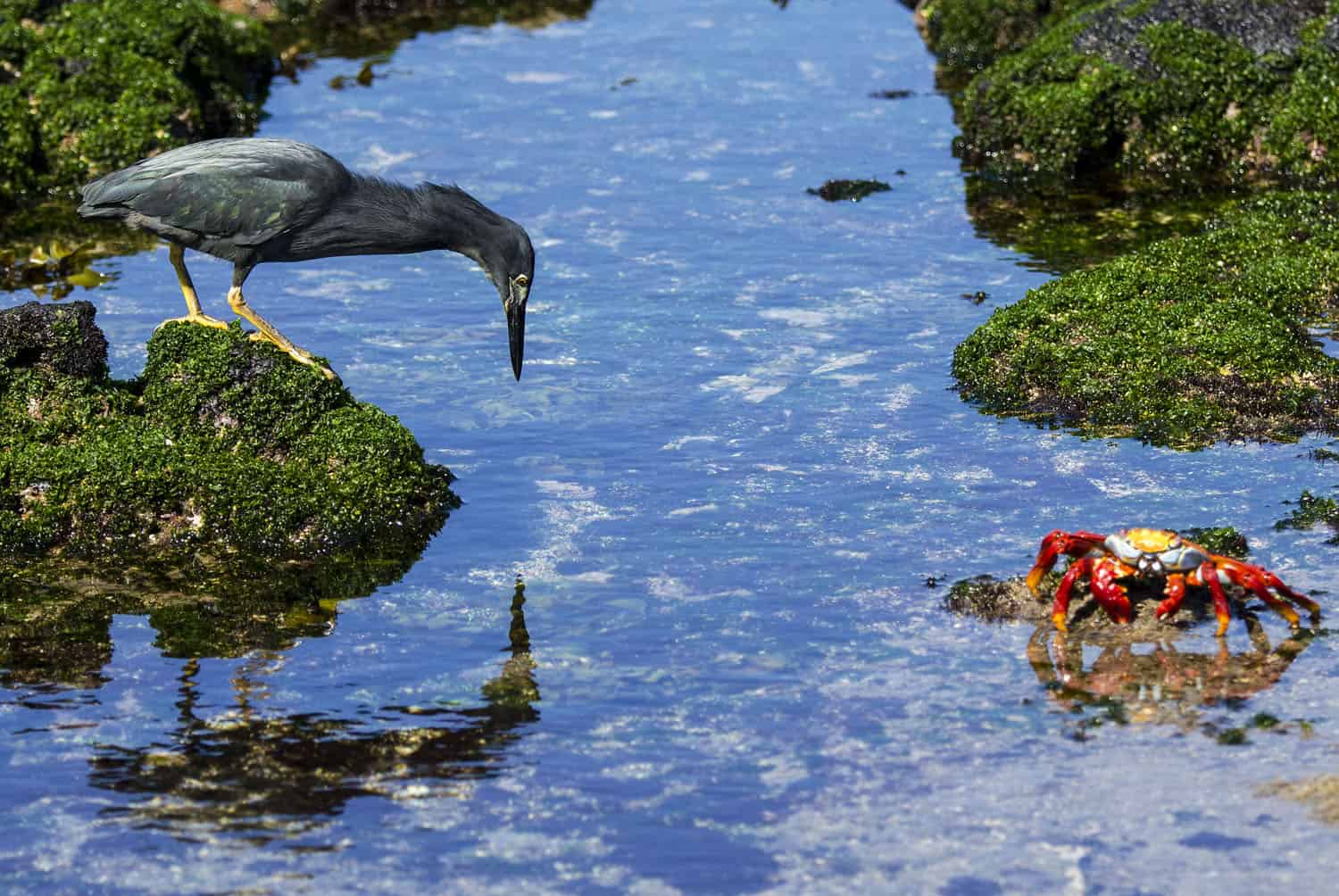
We moved to Rabida Island next, and while some snorkeled, others sat onshore among the sea lions and began reminiscing about the trip. I photographed sea lion pups playing, and spent time trying to stop action as blue-footed boobies dove into the azure waters. Around 10 p.m., we headed for bed for the last time aboard the Samba. We don’t want to leave!
We arose at 5:30 a.m. on our last morning onboard so we can make one last excursion, to North Seymour Island. The morning is warm and humid. During our 15 days on the Samba we have searched for male frigatebirds displaying. We’ve seen film and photos of the birds, who inflate their brilliant red gular sacs like a balloon, calling to the females with wings outstretched and vibrating. We had hoped to see their displays and on our last morning in the Galapagos, we succeeded! It was a wonderful and fitting way to say goodbye to the unique and inspiring Galapagos Islands. No doubt in my book: It is right up there with Antarctica.
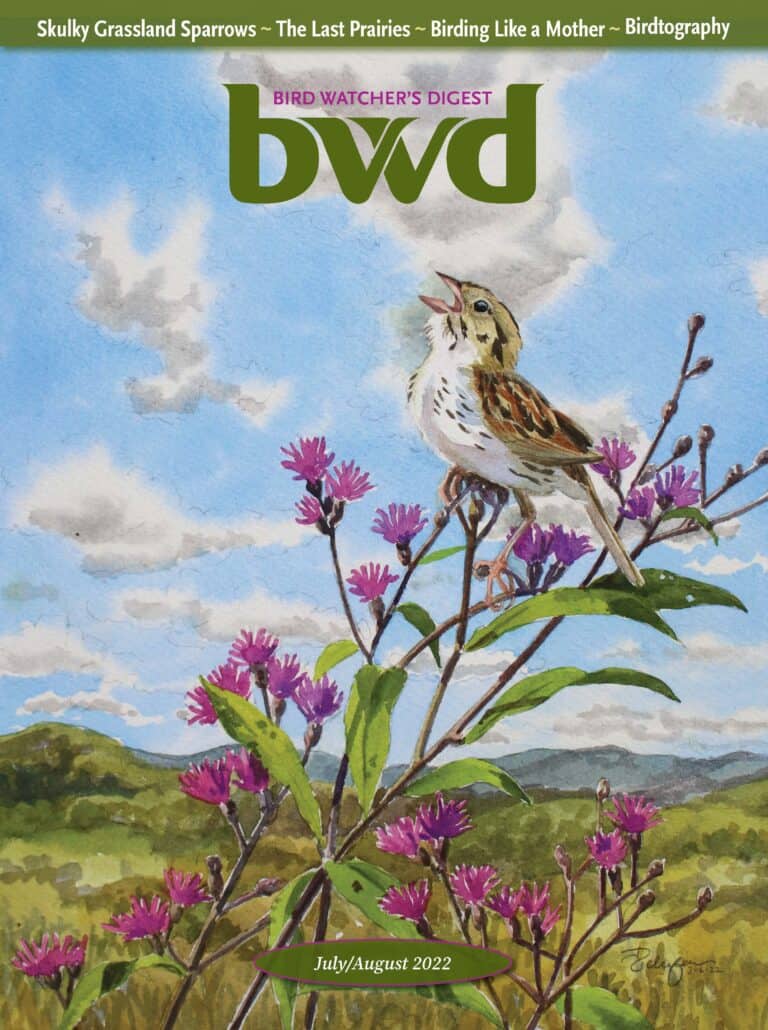
Looking to Subscribe?
Get 6 print issues of the magazine delivered to your door & free digital access
One Year Print Subscription: $26
(to US or Canada, includes digital access)
One Year Digital-only Subscription: $15

